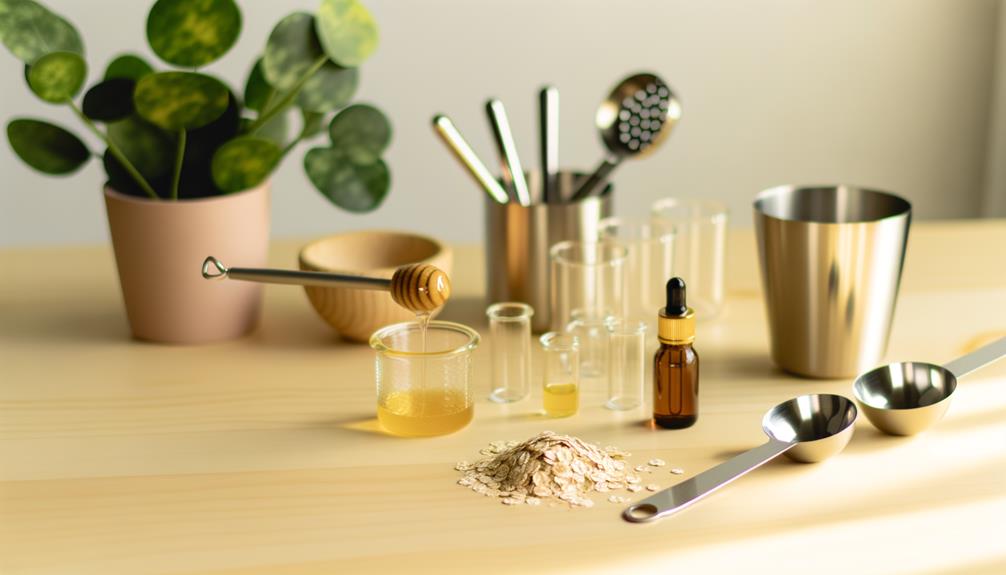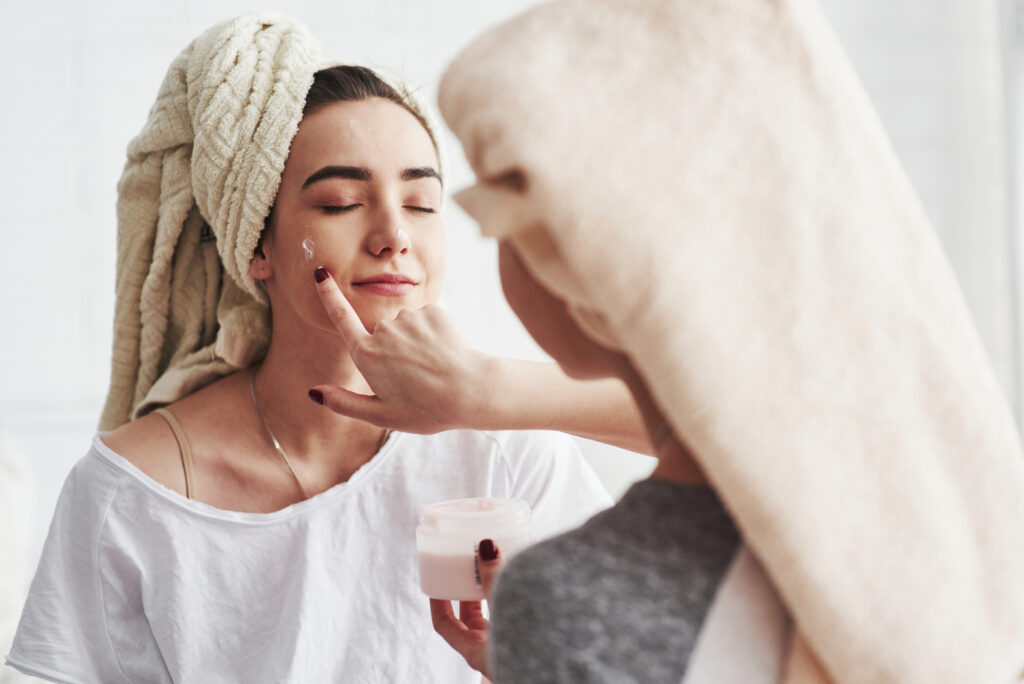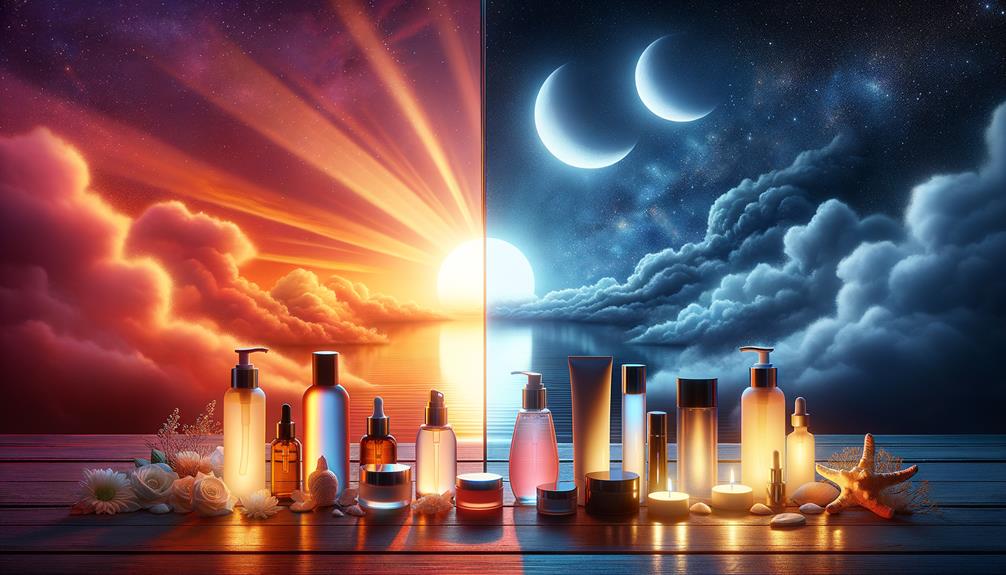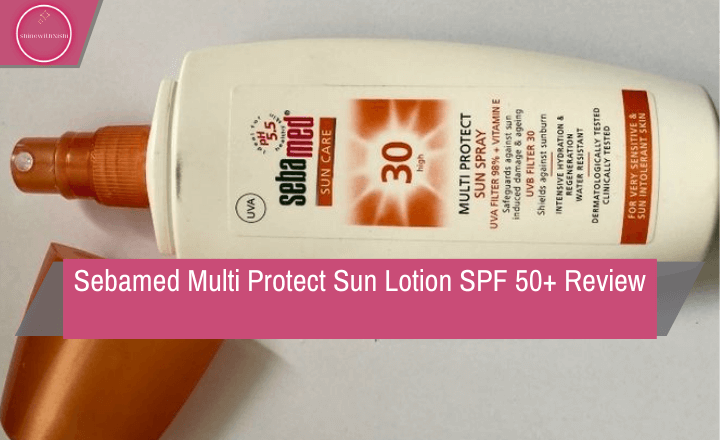You’re ready to master the art of DIY skin care formulations! Start by selecting high-quality ingredients like honey, aloe vera, and coconut oil, which cater to different skin types and needs. Incorporate honey for its moisturizing properties, aloe vera for soothing, and coconut oil for nourishment. Begin with simple recipes and gradually experiment with ingredient combinations like chamomile and shea butter, especially for dry or sensitive skin. Make sure to use precision tools and understand the role of each component in your mix. With each new formulation, you’ll better understand how to harness the full potential of natural ingredients for your skin.
Table of Contents
ToggleUnderstanding DIY Skin Care Formulation
When you start creating your own skin care products, it’s crucial to grasp what skin care formulation really involves.
You’ll need to learn the basics, from selecting the right ingredients to understanding how they interact.
This knowledge forms the foundation of every effective DIY skin care product you’ll make.
What is Skin Care Formulation?
DIY skin care formulation involves creating personalized beauty products at home using various ingredients to meet your specific skin needs. It’s a process where you blend different diy skincare ingredients to craft cosmetic formulations tailored just for you.
You’ll explore a variety of active ingredients that target specific concerns, ensuring each product works effectively for your skin type. By choosing to make at home, you control what goes into your products, avoiding unnecessary chemicals and additives found in commercial items.
This hands-on approach not only saves money but also allows you to experiment and learn more about what truly benefits your skin. It’s empowering to take charge of your beauty regimen through skin care formulation.
The Basics of How to Formulate Skin Care Products
Now that you understand what skin care formulation is, let’s explore how to begin creating your own products at home. The journey into DIY skincare starts with selecting quality skin care ingredients. You’ll want to gather essentials like oils, butters, essential oils, and active ingredients that suit your skin type and goals. It’s crucial to understand the role each component plays in your formulation to create effective and safe products.
Next, dive into recipes online. There’s a wealth of resources that offer step-by-step guides tailored to making skin care. Start simple, perhaps with a basic moisturizer or a facial scrub, and gradually experiment with more complex recipes as you gain confidence and knowledge in your DIY skincare adventures.
Key DIY Skin Care Formulation Ingredients
Now that you’re familiar with the basics of DIY skin care formulation, let’s focus on the essential ingredients you’ll need.
We’ll start by exploring natural formulations and why they’re beneficial for your skin.
Then, we’ll highlight the top seven ingredients that can transform your home-made skin care products.
Natural Skin Care Formulations
Explore the essentials of natural skin care formulations by incorporating key ingredients like honey, aloe vera, and coconut oil. These natural ingredients are not only effective but also gentle, making them perfect for your homemade skincare creations. By choosing the best ingredients, you’re ensuring that your DIY skin care products are both nourishing and beneficial.
| Ingredient | Properties | Benefits |
|---|---|---|
| Honey | Antimicrobial, Hydrating | Moisturizes, heals wounds |
| Aloe Vera | Soothing, Anti-inflammatory | Reduces redness, heals skin |
| Coconut Oil | Antioxidant, Moisturizing | Softens skin, reduces aging signs |
This table highlights why these ingredients are staples in natural skin care. Dive into DIY skin care ingredients like these for your next project!
Top 7 DIY Skin Care Ingredients
As you explore making your own skin care products, certain ingredients stand out for their effectiveness and ease of use. Ingredients like honey, aloe vera, and coconut oil aren’t only versatile but also gentle on your skin.
Incorporating elements such as tea tree oil and oatmeal can further enhance your DIY creations, tackling issues from moisture to irritation.
Honey
Honey, revered for its natural healing properties, serves as an exceptional ingredient for DIY skin care formulations. Here’s why it’s perfect for your natural beauty regimen:
- Moisturizer: Honey is a natural humectant, drawing moisture into the skin.
- Antioxidant: It provides antioxidants that help protect and rejuvenate both skin and hair.
- Versatility: Easily combines with other ingredients to enhance your skin and hair care routines.
10 Amazing Honey Face Mask For Glowing Skin
Aloe Vera
Aloe Vera, a powerhouse in DIY skin care, naturally soothes and moisturizes your skin, making it an essential ingredient for home formulations. It’s incredibly hydrating and works wonders both alone and when combined with other ingredients.
| Property | Benefit |
|---|---|
| Hydrating | Moisturizes deeply |
| Soothing | Calms skin irritation |
| Versatile | Blends well |
Aroma Magic Aloe Vera Cleanser Review
Coconut Oil
Coconut oil, celebrated for its versatility and rich hydrating properties, is an excellent choice for DIY skin care formulations, both on its own and when mixed with other ingredients. Here’s why:
- Protective Barrier: It forms a protective barrier on the skin to lock in moisture.
- Nourish: Rich in fatty acids, it deeply nourishes the skin.
- Deep Cleanse: Effectively removes impurities and excess oil.
Tea Tree Oil
Tea Tree Oil, renowned for its antibacterial properties, is a powerful addition to your DIY skincare arsenal, both alone and when blended with other ingredients.
This essential oil is a staple in many DIY skin care products, offering a natural solution for combating acne and other skin issues.
Its versatility makes it indispensable in crafting effective, personalized skincare treatments right at home.
Oatmeal
While Tea Tree Oil offers antiseptic qualities, Oatmeal is another favorite that soothes and moisturizes the skin effectively. Here’s why:
- Soothing: Oats contain compounds that offer anti-inflammatory benefits, calming irritated skin.
- Cleanser: As a gentle exfoliant, oatmeal removes dead skin cells, cleansing your skin naturally.
- Moisturizing: It helps to retain moisture, leaving your skin soft and hydrated.
Shea Butter
Shea butter is a powerhouse ingredient in DIY skin care, renowned for its deep moisturizing and skin healing properties. It’s perfect for creating luxurious body butters and enhances natural DIY skincare products. You’ll love how shea enriches every formula!
| Benefits | Uses |
|---|---|
| Hydrates skin | Body butters |
| Reduces scars | Lotions |
| Soothes irritation | DIY creams |
Green Tea
Green tea, packed with antioxidants, offers remarkable benefits for your DIY skin care projects, enhancing both standalone uses and combinations with other ingredients.
- Antioxidant Powerhouse: Bolsters your skin’s natural defenses against environmental damage.
- Versatility: Integrates seamlessly into various skincare recipes.
- Soothing Effects: Calms inflammation, making it a go-to for natural skincare and DIY beauty formulations.
Selecting Ingredients for Different Skin Types
When crafting your own skin care products, it’s crucial to choose ingredients that match your skin type. Whether you’re dealing with dry, oily, or sensitive skin, the right components can make a significant difference.
Let’s explore what specifically works best for each condition to enhance your DIY skin care routine.
The Right Skin Care Ingredients for Dry Skin
To effectively combat dry skin, you’ll want to prioritize incorporating hydrating and nourishing ingredients into your DIY skincare recipes. Here are some top picks:
- Hyaluronic Acid: This powerhouse ingredient can hold up to 1000 times its weight in water, making it perfect for deep hydration.
- Jojoba Oil and Rosehip Seed Oil: Both oils closely mimic the skin’s natural sebum, providing essential moisture without clogging pores. Rosehip seed oil is particularly rich in vitamins A and C, which help to regenerate skin tissue.
- Shea Butter and Chamomile: Shea butter intensely nourishes and moisturizes, while chamomile soothes and reduces inflammation, making this combination ideal for dry, irritated skin.
The Right Skin Care Ingredients for Oily Skin
If you’re managing oily skin, selecting ingredients that regulate sebum production without stripping moisture is crucial. Witch hazel is a fantastic choice for a toner due to its astringent properties that help tighten pores and control oil. Incorporate it into your routine to keep shine at bay.
Jojoba oil, despite being an oil, works wonders as a carrier oil because it closely mimics the skin’s sebum, helping to balance oil production. For deep cleansing, a clay mask can be your best friend. It absorbs excess oil and impurities, leaving your skin feeling fresh and matte.
The Right Skin Care Ingredients for Sensitive Skin
After exploring options for oily skin, let’s focus on the best ingredients for sensitive skin. When creating homemade skin care products for this skin type, you want ingredients that are gentle, non-toxic, and effective.
Here’s a quick guide to get you started with simple recipes:
- Oatmeal: Known for its soothing properties, oatmeal can calm irritated skin and reduce redness.
- Aloe Vera: This is a great choice for moisturizing and healing sensitive skin without causing irritation.
- Chamomile: Excellent for its anti-inflammatory properties, chamomile can help soothe and calm your skin, making it ideal for sensitive skin types.
Best Aloe Vera Face Mask For Pimples Free Skin
With these ingredients, you’ll create gentle, effective skin care solutions right at home!
How to Make DIY Skin Care Cosmetics at Home
Now that you’ve selected ingredients suited for your skin type, it’s time to explore how you can turn those ingredients into your own skincare products.
You’ll need to understand the right tools and techniques for mixing and applying your creations, ensuring they’re both effective and safe to use.
Additionally, learning about safety and stability testing is crucial to guarantee your homemade cosmetics remain beneficial and harmless over time.
Tools and Techniques
To start creating your own DIY skin care products at home, you’ll need a few essential tools and some basic techniques. Whether you’re aiming to craft lotions for your skin and hair or experiment with essential oils, the right setup can make all the difference for DIYers.
Here’s what you should have on hand:
- Precision Scales: Accurate measurements are crucial for successful cosmetic formulations.
- Double Boiler: Ideal for gently melting ingredients, ensuring your lotions and balms are smooth.
- pH Strips: Monitoring the pH of your products is essential for ensuring they’re safe and effective on the skin.
With these tools, you’ll be well-equipped to create personalized skin care that meets your specific needs.
Safety and Stability Testing
Before applying homemade skin care products, it’s crucial to perform safety and stability testing to ensure they’re both effective and secure for use. When making your own skin care, understanding the shelf life of your products is key. Products, especially those that are water soluble, can become breeding grounds for bacteria if not properly preserved.
Always include preservatives in your formulations to extend shelf life and maintain safety. You should also avoid using ingredients that are known allergens or irritants without proper testing. Conduct patch tests on a small skin area to check for adverse reactions.
Easy Do It Your Self Skin Care Products to Make
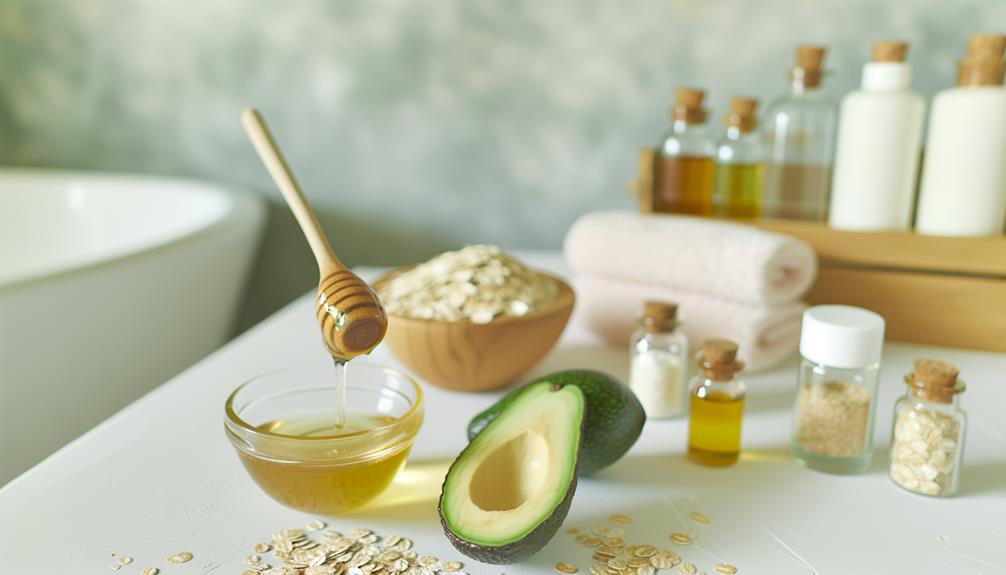
Starting your journey into homemade skincare doesn’t have to be intimidating. You can whip up effective products right in your kitchen with some beginner-friendly recipes.
Let’s explore how to create your own skincare items that are both simple and rewarding to make.
DIY Skin Care Recipes for Beginners
Dive into these beginner-friendly DIY skin care recipes that you can easily whip up at home. When you’re starting to find DIY solutions for your skin care routine, these simple recipes are perfect. They’re designed to make your skin feel refreshed and rejuvenated without overwhelming you with complex steps or hard-to-find ingredients.
Here are three easy recipes to get you started:
- Soothing Oatmeal Face Mask: Combine ground oatmeal, honey, and a bit of water. Apply to your face for soothing hydration.
- Refreshing Rose Water Toner: Mix distilled water with rose petals and a few drops of witch hazel.
- Customizable Moisturizer: Blend shea butter with your choice of carrier oil and add essential oils tailored to your skin type.
Homemade Skin Care Products Recipes
Let’s explore some easy-to-make homemade skin care product recipes that you can create right in your kitchen. Making cosmetics isn’t just fun; it allows you to control what’s going on your skin. Here’s a simple guide to get you started:
| Ingredient | Use in Recipe |
|---|---|
| Beeswax | Thickens and solidifies balms |
| Cocoa Butter | Moisturizes and softens skin |
| Vitamin E | Acts as an antioxidant |
| Rosehip Seed Oil | Improves skin elasticity |
Try mixing beeswax, cocoa butter, and vitamin E to craft a nourishing lip balm. For a rejuvenating facial serum, blend rosehip seed oil with a few drops of vitamin E. These recipes are not just effective but also incredibly easy to whip up!
Specialized Skin Care Recipes
You can tailor your skincare routine with these specialized recipes designed to target specific skin concerns. Whether you’re aiming for a radiant complexion or addressing specific skin issues, the right combination of ingredients can make a significant difference.
Here’s how you can enhance your skincare routine with specialized DIY recipes:
- Peptide-Rich Face Serum for Anti-Aging:
- Mix 1 teaspoon of peptide complex with 30ml of rose water.
- Add 5ml of glycerin to enhance moisture retention.
- Store in a dark dropper bottle and use nightly after cleansing.
- Brightening Face Mask for Glowing Skin:
- Combine 2 tablespoons of kaolin clay with 1 tablespoon of powdered vitamin C.
- Gradually add rosewater until a paste forms.
- Apply once a week for 15 minutes then rinse with warm water.
- Hydrating Overnight Mask:
- Blend half an avocado with 1 tablespoon of honey and 2 tablespoons of yogurt.
- Apply to the face before bed, leaving it overnight.
- Wash off in the morning with cool water for refreshed, hydrated skin.
These recipes aren’t just cost-effective; they’re also customizable to suit your specific skin type and concerns. By using active ingredients like peptides and vitamin C, you’re leveraging powerful components that can significantly boost your skincare outcomes.
Tips for Formulating Skin Care Products

As you transition from theory to practice, it’s crucial that you ensure your homemade skin care products maintain high quality.
You’ll want to focus on the techniques that help preserve the integrity and effectiveness of your formulations.
Let’s explore how you can bring your skin care creations to life while ensuring they remain safe and beneficial for use.
From Theory to Practice: Bringing Your Skin Care Formulations to Life
Transitioning your skin care ideas from theory to practice requires meticulous planning and precise execution. To ensure your home-formulated products effectively boost good skin health, using natural ingredients is key. Here’s how you can start:
- Select the Best Natural Ingredients: Opt for high-quality, natural components that are known for their skin benefits. Ingredients like honey, aloe vera, and tea tree oil can create powerful, effective skin care treatments.
- Test Small Batches: Before fully committing your resources, make small quantities to test the efficacy and skin compatibility.
- Document Adjustments: Keep a detailed record of what works and what doesn’t, adjusting your formulations based on feedback and results to refine your process.
Maintaining Quality in DIY Skincare
To maintain the quality of your DIY skincare products, it’s important to follow specific formulation tips. Opt for ingredients that are great for the skin and rich in antioxidants. These components help combat signs of aging and protect the skin from environmental stressors.
When mixing your ingredients, ensure precise measurements to keep the efficacy intact. Store your products in airtight containers away from direct sunlight to preserve their potency. Regular pH testing is crucial too; it ensures your products remain skin-friendly and effective.
DIY Skin Care Ingredients: Mastering The Best Skin Care Formulation at Home Conclusion
With the right ingredients and techniques, you’ve now unlocked the potential to create effective, personalized skin care products from the comfort of your home. Diving into DIY skincare might seem daunting if you’re new to DIY, but remember, every expert was once a beginner. By choosing high-quality ingredients like sweet almond and seed oil, readily available from suppliers like Bramble Berry, you’re setting yourself up for success.
Navigating the vast array of options doesn’t have to be overwhelming. Here’s a simple guide to keep you on track:
- Start Simple: Don’t overwhelm yourself with complex recipes. Begin with basic formulations like a simple face oil using sweet almond oil as a carrier and add one or two essential oils for added benefits.
- Quality Matters: Invest in high-quality, pure ingredients. Products at home are only as good as what you put in them. Quality oils like sweet almond or grape seed oil can make a significant difference in the effectiveness and feel of your final product.
- Test and Adjust: Your skin type is unique, so what works for others mightn’t work for you. Start with small batches, test them out, and adjust your formulations based on how your skin responds.
Frequently Asked Questions
Can DIY Skin Care Cause Allergic Reactions?
Yes, DIY skin care can indeed cause allergic reactions. You’re dealing with various ingredients that mightn’t be fully tested for personal use, so it’s crucial to patch test before applying anything new to your face or body.
If you notice redness, itching, or swelling, it’s best to stop using the product immediately. Always research and understand the properties and potential risks of each ingredient you plan to use.
How Long Do Homemade Skin Care Products Last?
When you make skincare products at home, their shelf life can vary greatly. Typically, they last anywhere from a week to a few months. It depends on the ingredients used and whether you include preservatives.
Products containing water or plant-based ingredients spoil faster, so it’s crucial to store them properly, usually in a cool, dark place. Always check for changes in smell, texture, or color, which can indicate spoilage.
Are There Eco-Friendly Packaging Options for DIY Skincare?
Yes, there are several eco-friendly packaging options for your homemade skincare products.
You can use glass jars or bottles, which are recyclable and reusable. Another great choice is metal tins, which are also highly recyclable.
For a more biodegradable option, consider using cardboard containers or bamboo jars. These materials help reduce waste and support a more sustainable environment.
Always check that the packaging suits the type of product you’re storing.
How Can I Test the Ph of My Homemade Cosmetics?
To test the pH of your homemade cosmetics, you’ll need pH strips or a digital pH meter.
Simply dip the strip into your product or place a small sample on the meter’s probe.
Compare the color change of the strip or read the digital display to determine the pH level.
It’s crucial for ensuring your products are safe and effective, aiming for a skin-friendly pH typically between 4.5 and 5.5.
Is It Cost-Effective to Switch to DIY Skincare Products?
Switching to DIY skincare can definitely be cost-effective, especially if you’re using common, multipurpose ingredients. You’ll save money on high-end brands and control what goes into your products, ensuring they’re free from unwanted chemicals.
Plus, bulk buying some of your key ingredients can cut costs further. However, initial expenses for tools and containers might seem high, but they’re usually a one-time investment.
Just make sure you’re not allergic to any ingredients you choose to use.
Conclusion
You’ve now mastered the essentials of DIY skincare formulation! By selecting the right ingredients tailored to your skin type and mixing them correctly, you can create effective, personalized skincare products.
Remember, practice makes perfect, so don’t hesitate to experiment with different recipes and techniques. Keep learning and adjusting your formulations to suit your skin’s evolving needs.
Enjoy the journey of creating your very own, unique skincare regime right at home!

